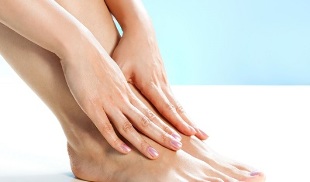
Fatigue, heaviness in the legs, slight swelling of the tissues, swelling of the veins and the first visible "vascular networks" may indicate the development of varicose veins in the lower extremities.
The statistics for this disease are very sad. For example, in one country alone, there are about 37 million people suffering from this disease. Every 6th patient is a girl under 12 years old. Such an early onset of the disease significantly increases the risk of complications, which, when neglected, threaten disability and even death.
What's so scary about varicose veins? Why is it so important to stop its development in the early stages? Read this article about its treatment methods, preventive measures from the point of view of specialists, as well as many other useful information about varicose veins of the lower extremities.
What are the varicose veins of the lower extremities?
All the veins in the human body are divided into deep, superficial and perforated. Deep vessels do almost all the work (90%) of transporting blood to the heart and perforated vessels are a kind of bridge between deep and superficial. The structure of the veins predicts the presence of valves that direct and promote blood flow only in the right direction. When the circulatory system fails, some of the blood accumulates at one point. This leads to local expansion (elongation) of the boat. The first to suffer are deep veins (the so-called internal varicose veins), later superficial in the form of "spider veins and nodes".
For a full understanding of the severity of the disease, it is worth noting that its development threatens the development of thrombophlebitis, pulmonary artery occlusion with thrombosis (or thromboembolism), as well as trophic ulcers of the foot, lymph node (edema) andmany other problems that can lead to patient death
The main causes of varicose veins of the lower extremities
Many factors can cause dysfunction of blood vessels, in general blood flow and then stimulate the appearance of varicose veins of the superficial veins of the lower extremities. Let's look at the main ones:

- Congenital malformation of the valves inside the venous vessels - the disease can be inherited. According to statistics, two thirds of patients have close relatives with a similar disease. Insufficient mobility reduces soft tissue stress. As a result, the reduction of the load on the blood vessels, their tone.
- During the "upright" position, the pressure inside the vessels of the legs increases tenfold. With a long vertical arrangement, the valves can not withstand the increased load, which causes a violation of their operation.
- Decreased vascular tone - may be due to age-related changes, loss of wall elasticity after certain diseases.
- Pregnancy - this period is characterized by an increase in blood in a woman's body, as well as the hormones progesterone, estrogen. Together, these changes stimulate the development of varicose veins in the lower extremities. It is true that the normalization of procedures is possible about 1 year after childbirth, if there are no complications from varicose veins.
Overweight, the presence of injuries, previous surgeries, hormonal disorders and the use of contraceptives completes the list of reasons for the development of the disease.
Diagnosis of varicose veins of the lower extremities - symptoms and diagnosis
The effectiveness of treatment, the speed of a positive result depends to a large extent on the accuracy and timeliness of the diagnosis of diseases.
Signs of varicose veins of the lower extremities will help diagnose the disease in its early stages:
- the appearance of slight swelling of the legs.
- swelling of superficial venous vessels, increase in their diameter.
- itching of the lower extremities with varicose veins.
- feeling of overwork, gravity.
- burning, pain caused by excessive stretching of the vein walls.
- leg cramps?
- noticeable blue skin along the vein, compression (hardening) of problem areas of tissues, formation of varicose eczema of the lower extremities.
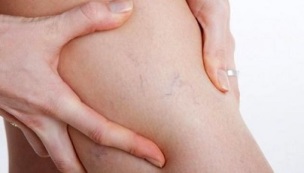
Even a slight violation of the integrity of the skin at the site of eczema can lead to the appearance of a food ulcer.
In the varicose veins of the lower extremities, the symptoms may appear at a later stage, which is undesirable. Therefore, if you have the slightest suspicion of illness, it is recommended to consult a doctor.
The diagnosis of varicose veins of the lower extremities is made with special equipment. Such a study is safe, painless and allows you to study in detail the severity of the disease.
There are many diagnostic options:
- visual inspection?
- color dual test method - the blood flow chart drawn up during the study allows one to judge the direction and speed of blood flow through the veins. The procedure informs about the condition of the blood vessels, which is important for predicting the development of varicose veins.
- venography - very rarely used because it involves X-ray examination.
During the diagnosis, you can observe the condition of the blood vessels, valves, analyze their functionality and determine the direction of blood flow.
Generally, the first reason for seeing a doctor is anesthetic changes. From the first type, they are harmless, they can further develop into serious diseases and complications. Therefore, you should not miss their importance.
Classification of varicose veins of the lower extremities
Doctors usually distinguish 5 stages of varicose veins of the lower extremities, each of which has its own symptoms:
- Stage 1- varicose veins of the lower extremities, which is the easiest treatment. It is distinguished by the presence of a "vascular network". The swollen veins are visible through the thin skin (especially in the fossa below the knee), the pain does not appear yet.
- Stage 2- partial varicose veins of the lower extremities, accompanied by slight fatigue, heaviness in the legs, even spasms in the calf muscles, slight swelling of the veins.
- Stage 3- the venous vessels stand out significantly from the skin, especially on the lower leg, thin skin with dark brown spots, itching, rashes, signs of dermatitis. Increased swelling causes discomfort when moving.
- Stage 4Varicose veins of the lower extremities - the symptoms are intense, complications of the disease appear, such as thrombophlebitis, manifestations of food ulcers. Varicose veins appear strongly through the thinned skin of the lower leg, feet and thigh.
- Stage 5- has all the symptoms of stage 4. In addition, the disease progresses in the groin area. The number of food ulcers is increasing rapidly, as is the frequency of thrombophlebitis attacks. The doctor finds impotence with varicose veins in the lower extremities at this stage.
The main task of both the patient and his doctor is to prevent the disease from developing beyond the initial stages and the sooner you contact a venologist, the easier it will be for him to stop the disease.
Treatment of varicose veins of the lower extremities

Medicine does not stop, but develops the latest technologies to fight venous disease. The treatment of varicose veins of the lower extremities can be carried out with conservative methods (drugs, minimally invasive procedures), surgery, home treatments in combination with massage.
The deterioration of the attractiveness of the appearance is not the whole list of possible problems. Complications and disability can add to it. Modern medicine offers a wide range of non-surgical effects on problem areas and is often physiotherapy for varicose veins of the lower extremities that is most effective in the early stages of the disease:- The use of creamy preparations, gels, ointments for varicose veins of the lower extremities, these drugs bring remarkable relief. They are easily applied to the surface, do not cause pain and discomfort.
- The use of bentonites - drugs that, in case of varicose veins of the lower extremities, normalize the function of the veins
- Laser exposure - the method of intravenous laser vein removal (ELOV) is widely used in the fight against varicose veins. The beginning of the process is to stop the operation of the problematic vein, due to the effect of a heat radiation on it. Laser treatments are performed under local anesthesia, no restrictions on activities and extra hospital stay are required. The patient has the right to return home immediately after the procedure.
- Magnetic therapy for varicose veins of the lower extremities is a modern adjuvant method that promotes blood thinning, stimulates blood circulation and, therefore, helps remove toxins from the tissues and oxygen saturation.
- RF exposure - RF works like a laser. They exclude the problematic vessel from the circulatory system, thus eliminating the risk of possible complications. Sclerotherapy - involves the introduction of a special drug into the diseased vein, which promotes the adhesion of the vessel walls and its self-elimination from the bloodstream after a while.
It should be noted that prior consultation with a doctor and special examination is required.
Surgery for varicose veins of the lower extremities
Delayed doctor visits, neglect of the disease lead to CVI (chronic venous insufficiency) and the impossibility of minimally invasive treatment. In such cases, surgery comes to the rescue.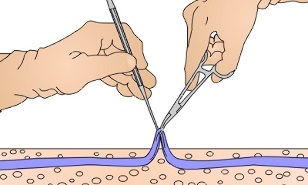
The following factors are considered indications for surgery for varicose veins of the lower extremities:
- The disease is in severe stages, when food ulcers manifest progressively.
- development of thrombophlebitis?
- discomfort associated with excessive fatigue, swelling in the legs.
The principle of surgery is based, like conservative techniques, on the elimination of the problematic vein from the circulatory system. Only with minimally invasive methods do the vessels stick together, and during the operation they are tied on both sides and removed.
There are many basic surgical procedures for varicose veins of the lower extremities:
- Phlebectomyis a classic variant of surgery. Small incisions (up to five millimeters) are made in the skin through which a probe is inserted and the weak vein is removed. The procedure lasts no more than two hours and does not involve long-term hospitalization.
- Miniflectomy- differs from classic phlebectomy in the size of the hole in the skin. In this case, these are minimal piercings that minimize the recovery period and leave no visible marks on the body.
- Short stripping- requires exact location of the problem area. Only the affected part is removed. There are no traces left after the procedure.
- Vein dissectionunder the control of a high optical endoscope. It is injected directly into the diseased vein, the operation is performed through a monitor. The experience and qualifications of a surgeon increase the chances of a successful operation.
Surgery will solve the problem of painful veins, reduce the risk of developing the disease and help relieve symptoms in the later stages. Compression underwear, Venetian medicine is the main condition for the recovery period. They contribute to early recovery, to the normalization of blood circulation.
Treatment of varicose veins of the lower extremities with folk remedies

Home remedies occupy a special place in the treatment of varicose veins of the lower extremities. We do not need to claim their immense importance, but there is nothing to underestimate their dignity. Cooked decoctions, infusions, compresses can reduce pain, relieve the feeling of heaviness and fatigue after a hard day.
As a treatment option for varicose veins, traditional medicine recommends a tincture of reed root in red wine for internal use. There are also recipes for external scrubbing.
Unclosed birch buds are infused for 10 days in 0. 5 liters of vodka. When ready, the product is rubbed into the skin.
Useful compresses for varicose veins of the lower extremities from yogurt with garlic or wrapping with fresh cabbage leaves.
You should not expect extremely fast results. The funds are suitable for prophylactic purposes and for the treatment of primary varicose veins of the lower extremities, along with medicines prescribed by the doctor separately. Do not use any treatment without talking to your doctor.
Massage and exercise for varicose veins of the lower extremities
The healing properties of massage have been known to mankind for a long time. Massaging the lower extremities with varicose veins also has a beneficial effect. Increases blood and lymph flow, normalizes venous pressure and initiates metabolic processes within tissues.
The massage technique is strange. It is forbidden to touch the area of the affected vein in any way possible, only around it. Light stinging, wide grip and stroking are the main techniques of the process. It is recommended to combine massage with a set of exercises.
Gymnastics for varicose veins of the lower extremities involves the implementation of a whole range of actions:
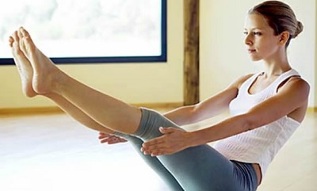
- Warm up - you should lie down for two to three minutes. They must be supported on a wall or other hill, this position guarantees their complete relaxation.
- Exercise "Bicycle" - the movements are identical to riding a bicycle. Only the position of the body "lying on the back".
- Exercise "Scissors" - the upper extremities intersect for at least one minute.
- Exercise for calf muscles - in a supine position, bend one leg so that the knee reaches the chest. Move in the opposite direction while massaging the problem muscle. Repeat the process four times with each foot.
- Get up. For three to five minutes, lift your toes and lower yourself to the starting position.
- The exercise complex or exercise therapy for varicose veins of the lower extremities guarantees a preventive, therapeutic effect that aims to accelerate the outflow of venous blood to the heart, increasing vascular tone.
It is important for the doctor not only to approve the exercise set for daily exercises, but also to ensure that the patient performs them correctly, without creating additional stress on the blood vessels.
Prevention of varicose veins of the lower extremities
It is better to prevent the problem than to cure it later! Experts unanimously propose the following measures to prevent the disease:
- Move more - reduces the risk of blood and lymph congestion.
- Exercise regularly against varicose veins.
- Shoes should be comfortable, the heel should not exceed four inches. Prolonged exposure to the sun does not work well on the walls of blood vessels, limiting the time for hot baths.
- Prefer a contrast shower, it improves blood circulation.
- Focus on fresh vegetables, fruits and vegetable products. A special diet for varicose veins of the lower extremities is the "best friend" of health.
- Rehydrate your body with 2 liters of fluid a day.
- Eliminating fatigue, improper sitting or uncomfortable position during rest is the best prevention of varicose veins of the lower extremities.
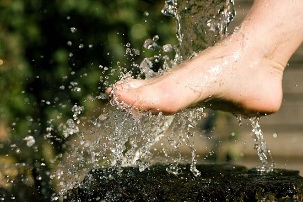
We must remember that varicose veins of the lower extremities are a progressive disease. From painless "stars", it can develop into thrombophlebitis and food ulcers. Beauty, the absence of pain and heaviness in the legs can be maintained by following the simple recommendations of experts. If you have the slightest suspicion of illness, consult a phlebologist. Remember, varicose veins can not be completely cured, but it can be avoided, minimizing the risk of further development. Be healthy!




































